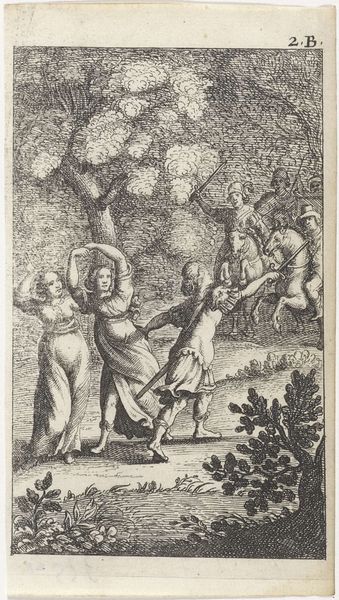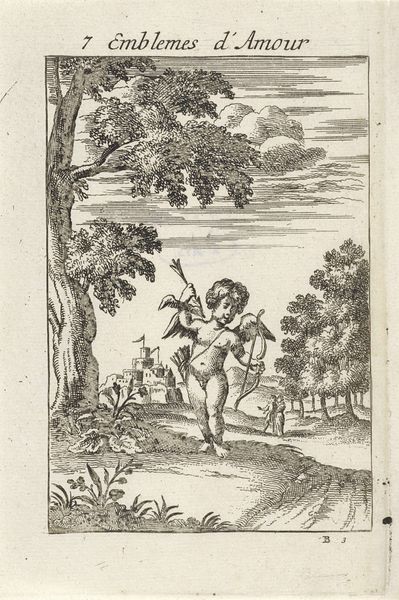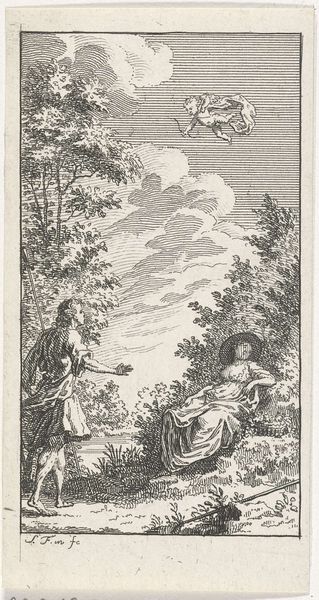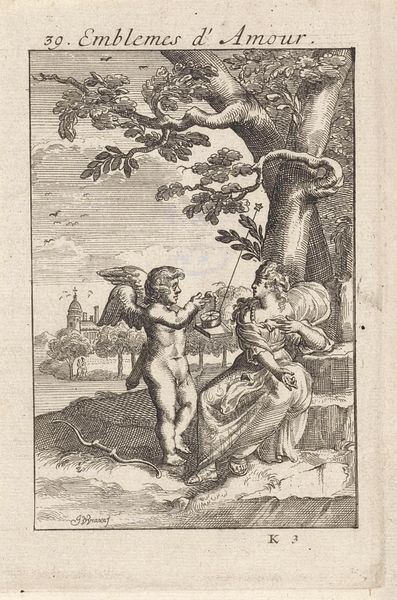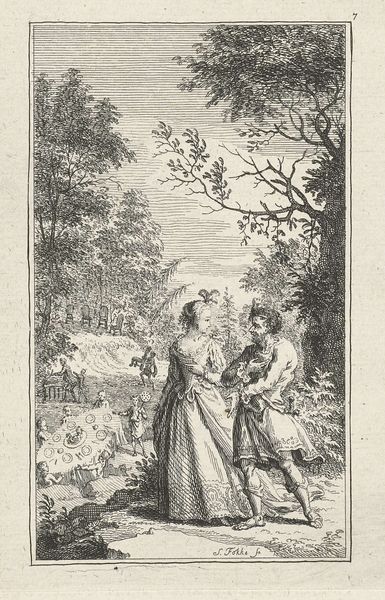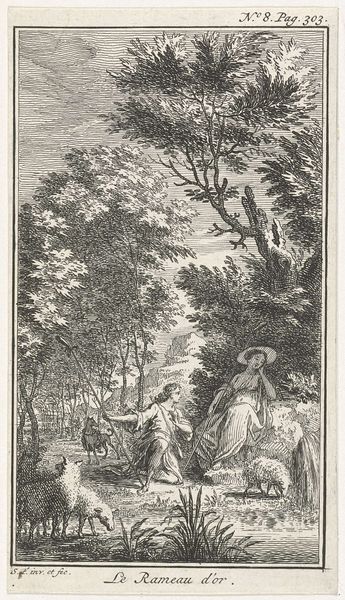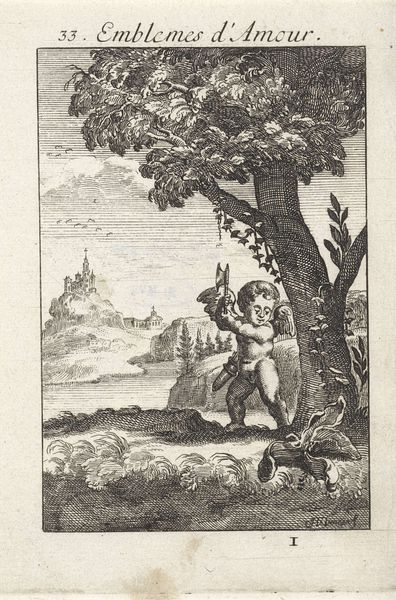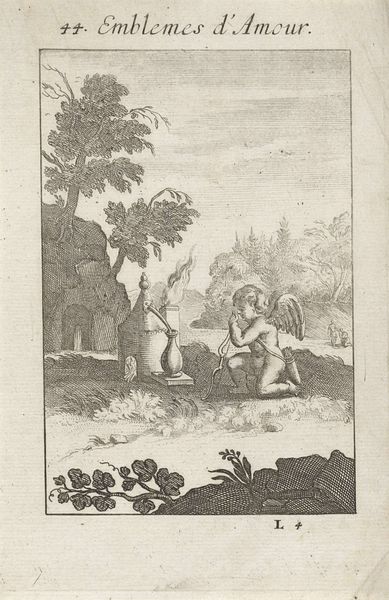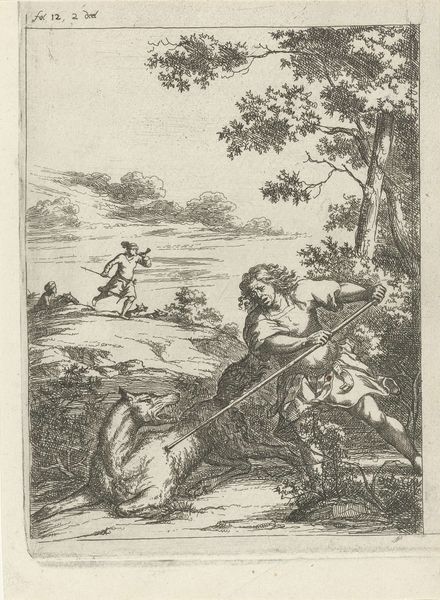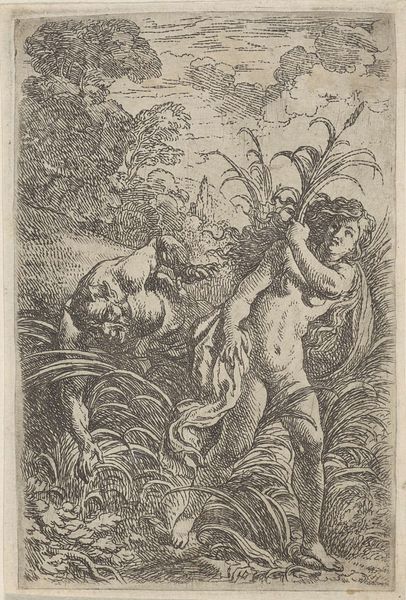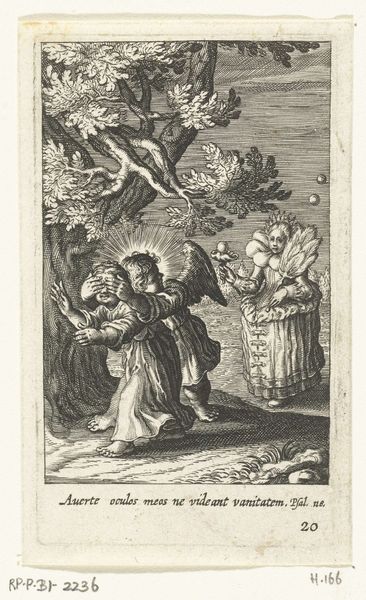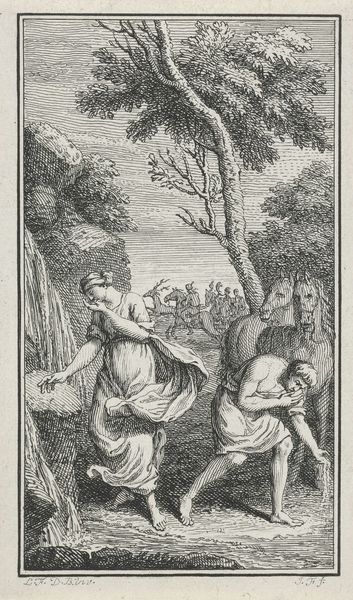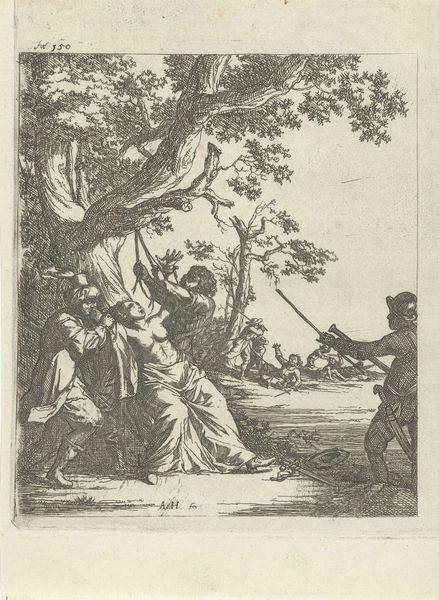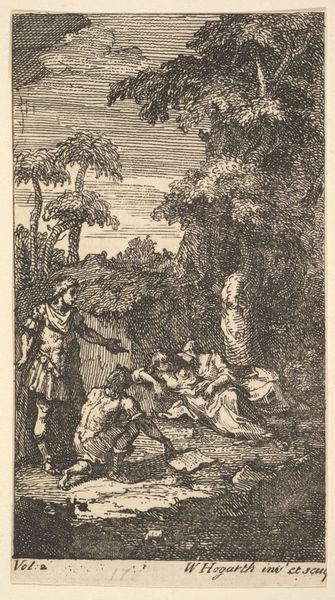
engraving
#
allegory
#
baroque
#
pen sketch
#
old engraving style
#
landscape
#
history-painting
#
engraving
#
miniature
Dimensions: height 145 mm, width 95 mm
Copyright: Rijks Museum: Open Domain
This print, Amor bij een vrouw die bloemen plukt, was made by Jan van Vianen, sometime between 1660 and 1726. It’s an etching, made by drawing a design with a needle through a waxy coating on a metal plate, which is then dipped in acid. The acid bites away the exposed lines, and the plate is then inked and printed. The relatively small scale of this print, just 145 by 95 mm, speaks to its likely function as an illustration in a book. The image shows Cupid approaching a woman gathering flowers, it has an allegorical tone that was very popular at the time. The technique allows for the creation of intricate detail, visible here in the landscape and the figures’ poses. Etching was also a relatively inexpensive method of image production, meaning it was an effective way of disseminating ideas. Ultimately, this print shows how craft techniques played a vital role in communicating ideas and beliefs in early modern Europe.
Comments
No comments
Be the first to comment and join the conversation on the ultimate creative platform.
